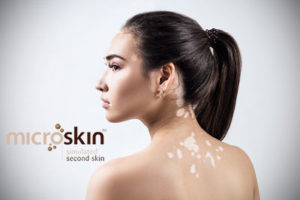
How is Vitiligo different from Albinism and how does it matter
Pigmentation is the colouring of the skin, when the melanin in our cells impart colour over our skin. If there is normal pigmentation, the skin will appear natural or normal. Skin colour may vary a little depending on any illness or injury. In such cases, there may be hyperpigmentation(darkened skin colour) or hypopigmentation (lighter skin colour).
Hypopigmentation in skin
Hypopigmentation occurs when there is a severe lack of melanin in our body. This condition includes, but is not limited to:
Vitiligo- Vitiligo causes white patches on the skin. These are smooth patches that may appear all over the person’s body. In this, the cells that produce melanin are damaged, and they can’t be cured.
Thankfully, there are several treatments, such as corticosteroid creams, cosmetic cover-ups, ointments, inhibitors, UV light treatments, etc.
Albinism- It is an inherited disorder or pigmentation. It is rare and caused due to the lack of an enzyme. This enzyme is responsible for producing melanin. This results in a complete absence of colour or pigmentation in the skin, hair as well as eyes.
Much like vitiligo, there is no cure for Albinism. They need to use sunblock at all times because their skin is more sensitive to sunburns and skin-cancer than the average human being.
Similarities and dissimilarities
Vitiligo and Albinism are similar in the sense that they are both skin conditions that stem from a lack of melanin.
Albinism, however, is a genetic condition and is inherited during birth. The symptoms of Albinism shall include having no colour in the hair, skin or eyes. If the pigment of even one is absent, it is a symptom of Albinism. Sometimes it can be identified at the time of birth itself.
The problem in Albinism is that melanocytes, or pigment cells, are present but dysfunctional/non-functional.
Vitiligo is when you are usually born with average pigmentation, which changes as your melanocytes reduce in number and don’t regenerate. Thus, vitiligo happens over time, but Albinism is always present since birth.
They are treated differently. Vitiligo consists of patches of skin with no colour, and these patches may be spread across the entire body. Visible spots can be covered up with makeup as a temporary method to cope. This is not an option that is available to people with Albinism. It is impossible and impractical to cover one’s entire body with makeup every time one steps out in public.
Certain facts about vitiligo
There are so many myths about vitiligo. These myths create fear and lead to the isolation of those suffering from vitiligo.
Vitiligo doesn’t differentiate between any gender, ethnicity, race or age.
Usually, there is no permanent fix, and it is deemed a lifelong condition. The cause for vitiligo is still unknown, but doctors believe that it may be due to a certain kind of virus. There are treatment options available that can cause depigmentation of the skin. The important fact is that vitiligo is not contagious. There is no harm in having bodily contact with a person suffering from vitiligo.
Remedies for those with vitiligo
Using sunscreen
The American Academy of Dermatology strictly recommends the use of sunblock or sunscreen, as the lighter patches of skin are more prone to skin diseases or skin-cancer than customarily pigmented skin.
Phototherapy using UVB light
This is a commonly used option. You can conduct this at home as well, with the help of a small UVB lamp. If you go to a clinic for the same, the treatment will be completed in nearly three visits a week, and it will take a longer duration.
If there is a severe case and large patches, or if the spots are all across the body, then the treatment will be carried out in a hospital.
Phototherapy with UVA light
Before this treatment can be administered, the patient is made to take some drugs. These drugs increase the skin’s responsiveness to UVA light. Progress is visible in 6 months.
How is Albinism different?
Albinism is inherited and genetic. There are various types of Albinism, and they are divided into multiple classes. A famous myth about Albinism is that people suffering from Albinism have demonic red eyes.
This is untrue, but lighting may be such that the eyes may seem reddish or violet. This is because the blood vessels at the back of the eyes also become visible in certain lighting conditions.
People suffering from Albinism also have problems related to their vision. These problems are usually not correctable, and they often wear sunglasses or eyeglasses all day long.
This is due to an abnormality in the retina or nerve connections between the eye and the brain.
People with Albinism pose a greater risk of isolation than those with vitiligo.
Both skin disorders are severe and can cripple the confidence of the patient. It is best to extend support and love to anybody suffering from either of these conditions, as well as to their families.
